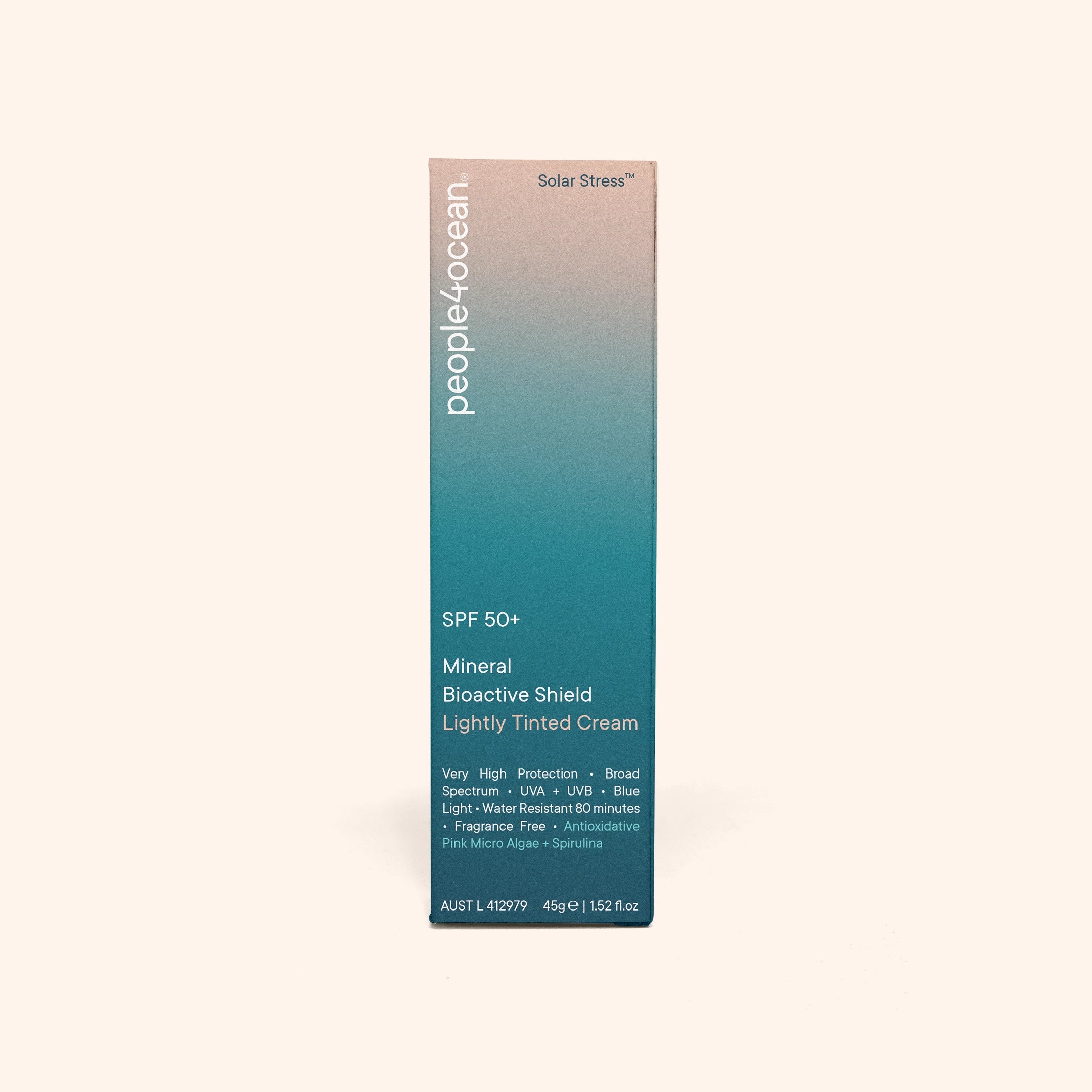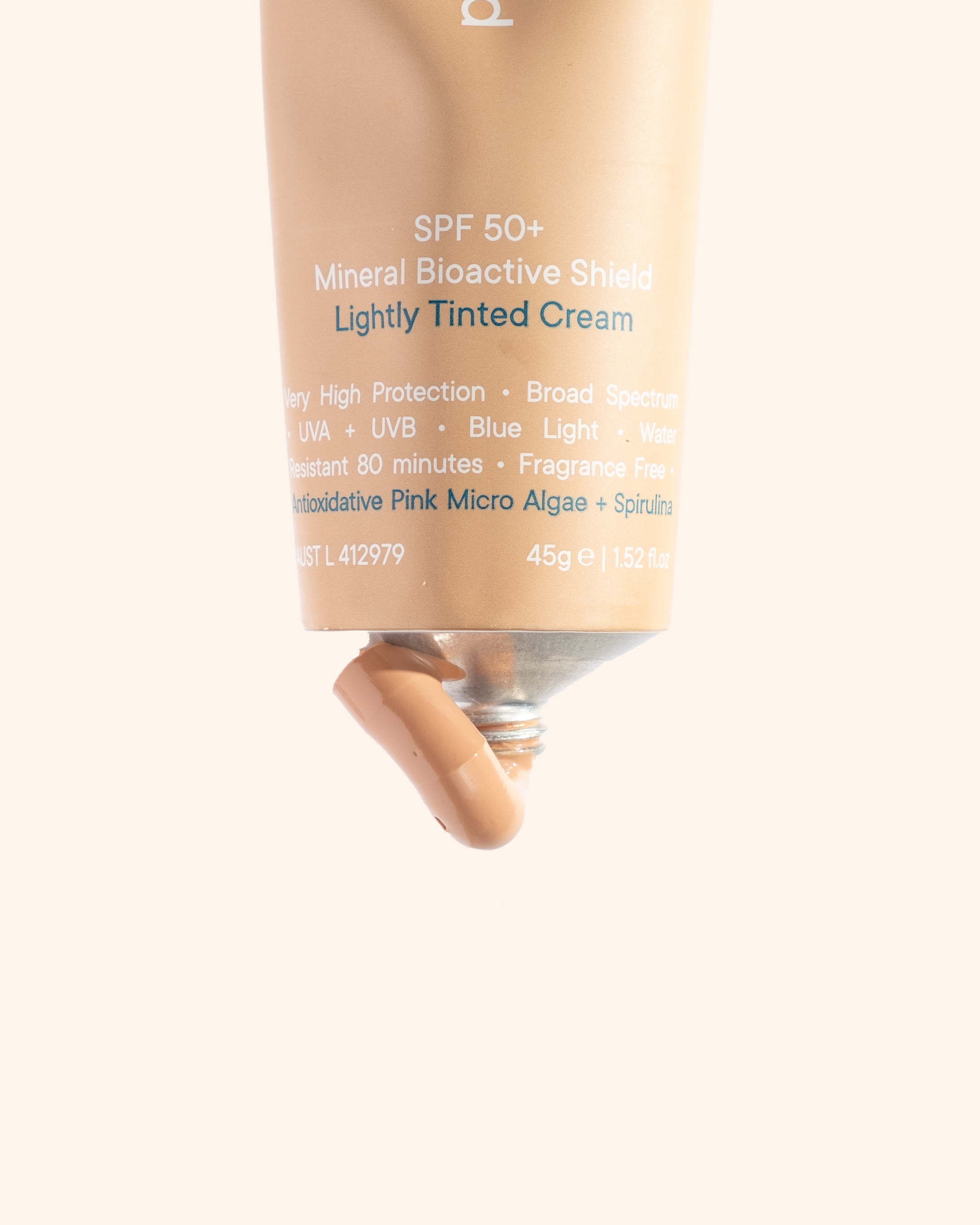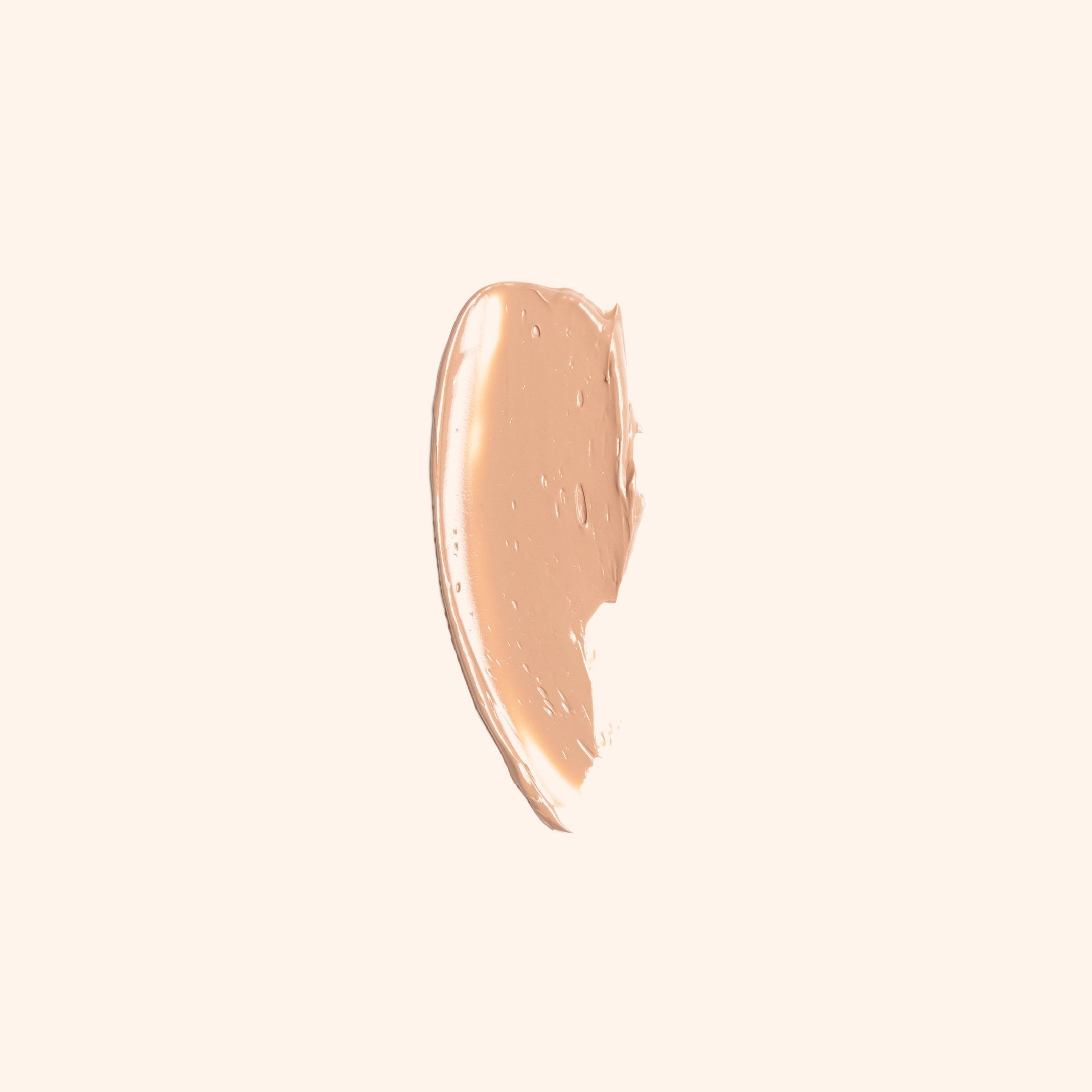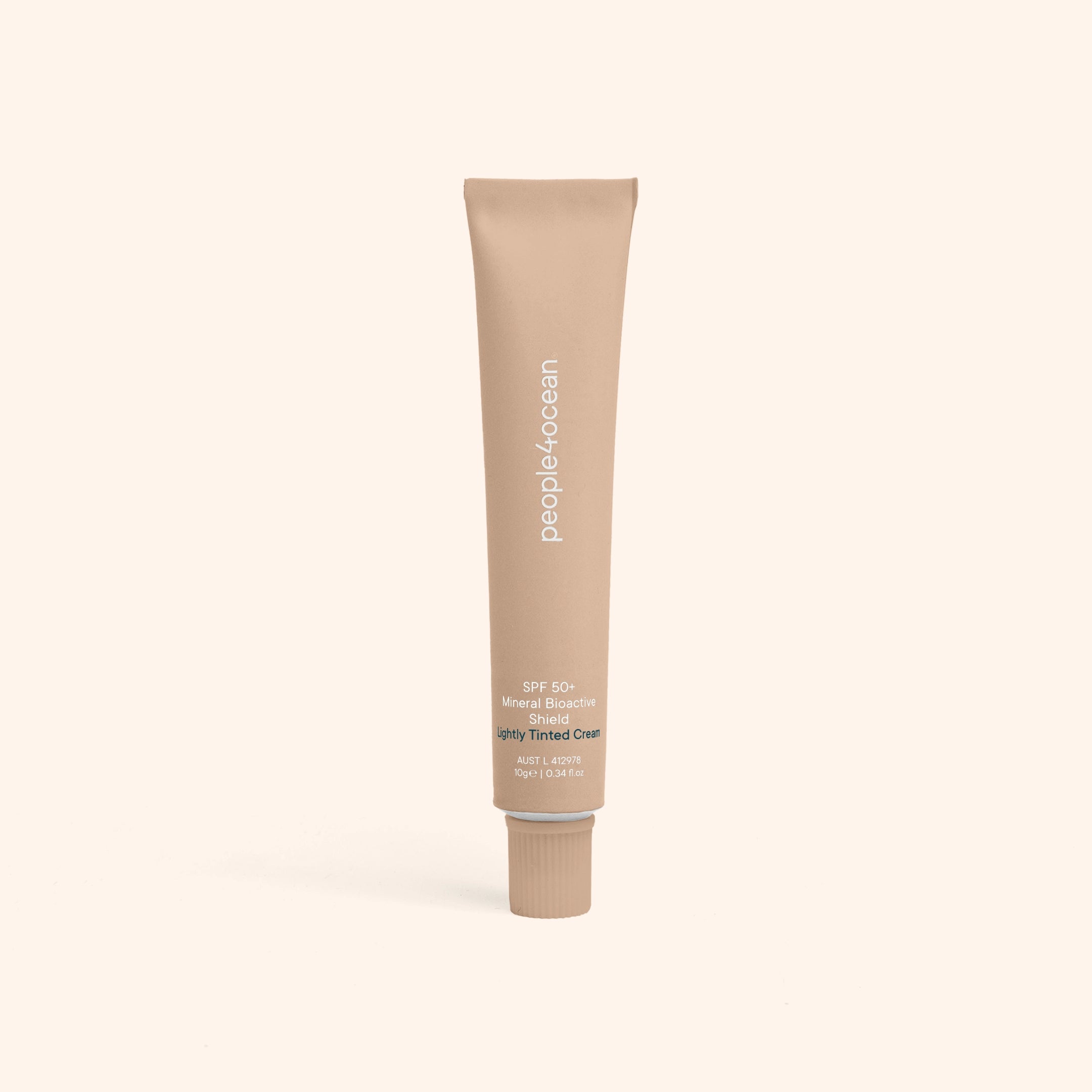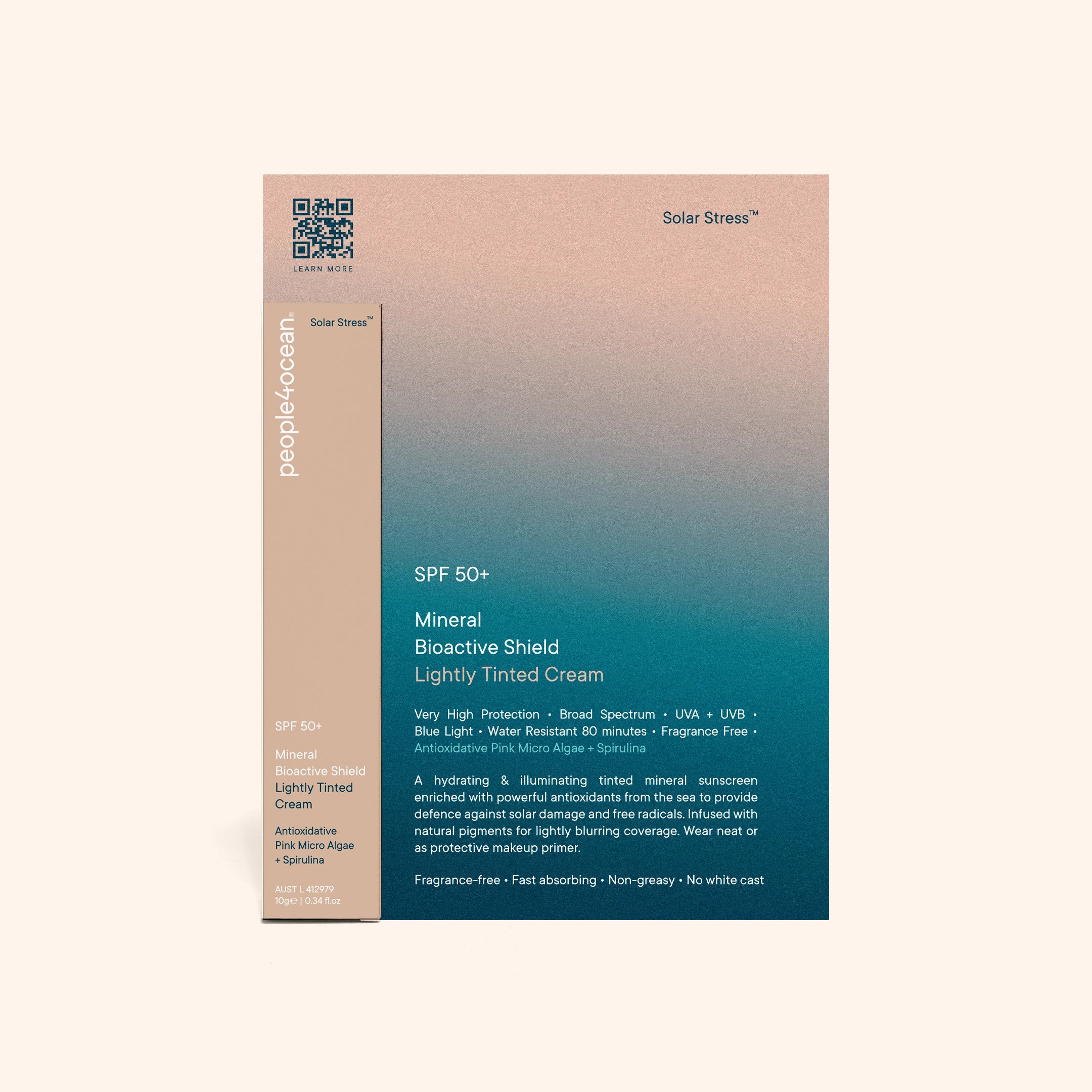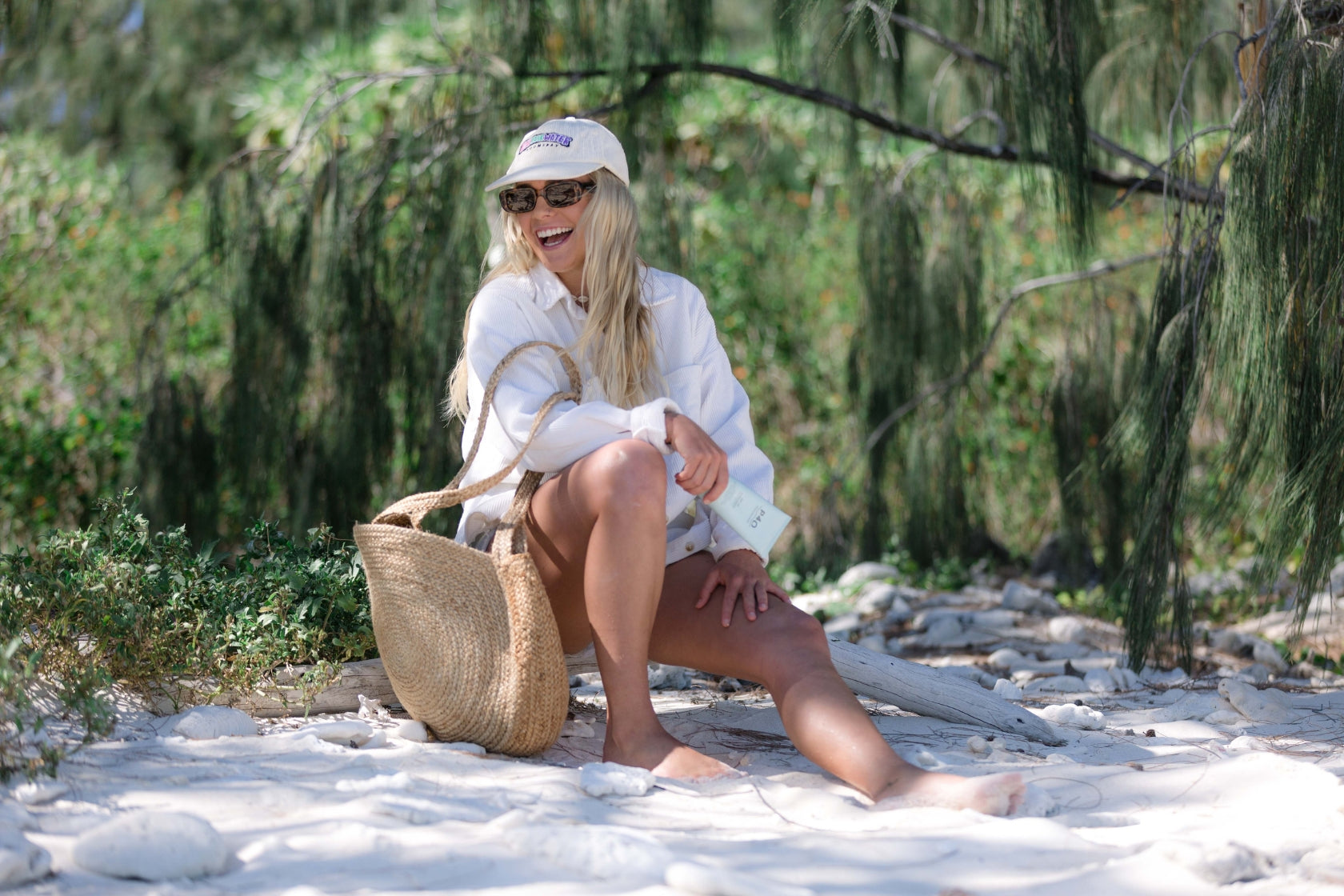Solar Stress™
SPF 50+ Mineral Bioactive Shield | Lightly Tinted Cream
A seamless, hydrating and illuminating tinted face sunscreen enriched with marine phytonutrients and powerful antioxidants from the sea to provide bioactive defence against solar, blue light and free radical damage. The inclusion of natural pigments create a subtle, brightening and lightly blurring coverage. Wear neat or as protective makeup primer.
Vegan • Fragrance Free • Fast Absorbing • Non-Greasy • No White Cast.
INGREDIENTS
Pink Micro Algae Extract (Dunaliella salina) Infused at a preventive concentration of 0.5%. This antioxidant powerhouse brings countless age-fighting benefits such as defence against inflammation, DNA damage and other common cellular disruptions.
Spirulina extract (Arthrospira platensis) rich in essential amino acids, macronutrients and antioxidants, this water-born skin superfood assist with skin tone, brightness and sebum regulation.
Active: EcoCert Non-Nano Zinc Oxide 22.75%. Excipients: Purified water, Coco-octanoate/decanoate, Octyldodecanol, Medium chain triglycerides, PEG-30 dipolyhydroxystearate, Glycerol, Polyglyceryl-3-polyricinoleate, Cetostearyl alcohol, Cetearyl glucoside, Gluconolactone, Isostearic acid, Sodium chloride, Simmondsia chinensis (Jojoba) oil, Dunaliella salina extract, Sodium benzoate, Xanthan gum, Disodium edetate, Arthrospira platensis (Spirulina) extract, Iron oxide red, Iron oxide black, Iron oxide yellow.
HOW TO USE
Apply to face daily, post serum + moisturiser (for dry skin only). Wear neat or under makeup. Use sun protection daily and all-year round, even on cloudy days. A clean SPF routine is your best defence against premature signs of ageing and skin cancer.
BENEFITS
- Full-spectrum UV and Blue light protection
- Antioxidation, anti-glycation, anti-inflammation
- Acne and sebum regulation
- Improved barrier function, moisture and collagen activation
- Delivers unstoppable glide for effortless and even application.
- Solves the greasy, heavy, sticky feel of many mineral sunscreens thanks to non-comedogenic botanicals and micronized (non-nano) zinc technology.
- Allows all skin types, even oily-prone, to enjoy the safest sun protection, even under layered makeup.
- Removes the worry of chemically laden, hormone-disruptive SPF alternatives and allows you to fully invest in a lifetime of healthy sun-proofed skin while keeping your body and our oceans toxin-free.
- Australian made, Reef-Friendly, Vegan, Pregnancy & Baby safe.
PACKAGING + SUSTAINABILITY
Our tube is made from 100% Recycled Aluminium, which is 100% recyclable, (even our 10g tube).
To Recycle: Separate tube from cap. Place empty tube in recycling bin (can be flat or rolled and does not require cleaning). Place cap in recycling bin.
- When degrading, Aluminium won’t leave micro-plastics or micro-pieces behind. It will simply oxidise (rust away) into ions especially in sea water.
- Aluminium has an excellent recycling rate at any size (whereas plastics smaller than fist size are strictly not recycled and end up incinerated or in landfills).
- The Global Efficiency Recycling Rate (RER) of Aluminium is currently 76% (and rising). Which means 76% of aluminium ever produced is still in productive use today. This is significantly better than plastic, which RER is a sad 9%.
- If not recycled, Aluminium can take up to 200 years in landfills to get completely decomposed, so placing your tube in the recycling bin is an important step in facilitating its recycling.
- Recycled Aluminium requires 95% less energy to manufacture than virgin aluminium, avoiding significant emissions, including greenhouse gases.
FAQ
Questions and Answers
Why is zinc oxide the best UV filter?
We use zinc oxide as our only active ingredient, and here is why:
+ It is the only reef-safe UV filter available.
+ Zinc oxide provides excellent sun protection and has several advantages over synthetic actives. Zinc particles sit on top of your skin and act as a reflective barrier (exactly like a mirror) to block both UVAs & UVBs from penetrating your skin and causing damage and ageing.
+ It is the only FDA* and TGA** approved broad spectrum sun protection ingredient, and unlike any other active ingredient, its concentration in a product has no limitation. It is also the EWG (Environmental Working Group) nº1 ingredient for skin protection.
+ Zinc oxide is also effective for healing the skin. It can be used to heal wounds, reduce the tenderness associated with sunburns and soften chapped skin. It is sometimes used as an acne treatment - it is believed to reduce the appearance of blemishes and reduce skin irritation and inflammation, reducing the number and severity of acne breakouts.
* Food & Drug Administration (US).
** Therapeutic Goods Administration (AU).
What does reef-safe mean?
Many sunscreens contain ingredients that wash off our skins (or down the drain) to harm coral reefs, even at very small concentrations. Using a "reef safe sunscreen" means that no ingredients in that product will cause detrimental effects to marine life. That includes coral reefs but also marine mammals, turtles, fish and a variety of marine species. Remember that certain brands falsely claim to be "Reef-Safe" but actually contain chemicals harmful to ocean life, so always check the label for these toxic ingredients:
Oxybenzone,
Avobenzone,
Octinoxate,
Octocrylene,
Parabens,
Triclosan
What is PEG and is it safe?
PEG is an acronym for polyethylene glycol, an amazingly versatile and tolerant ingredient in skin care products.
The safety of PEG in its various forms has recently been questioned. The primary concern is that they can contain problematic impurities such as ethylene oxide and 1,4 dioxane. Both of these are by-products from the manufacturing process, not something natural to any form of PEG. Although this was once a concern, reputable cosmetic ingredient suppliers have long since eliminated these impurities from the finished ingredient, which makes PEGs safe for skin.
We have extensively researched the safety of this ingredient and use many trusted references such as the database of the Environmental Working Group (ewg.org). When used topically, research has shown low risks for allergies & immunotoxicity, low developmental and reproductive toxicity and no statistical links to cancer.
How much sunscreen should I apply?
Sunscreen should be the last line of defence after clothing, a hat, shade and sunglasses. Research shows that sunscreens are effective when applied frequently and liberally. The Australian Government Therapeutic Goods Administration (TGA) recommends at least a teaspoon for each limb, front and back of the body and half a teaspoon for the face, neck and ears every two hours. You should apply one cupped adult hand (30 to 40 ml) of sunscreen for an adult body. When using an aerosol can, remember that some of the sunscreen may not land on your skin. This is also why we don't offer aerosol-type products.



